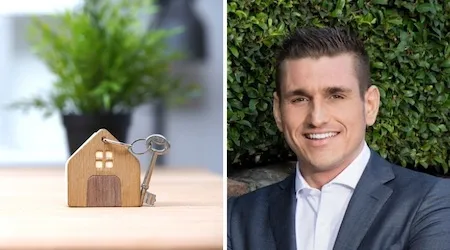Where should you buy property in 2020?

With property prices on the rise, real estate expert Conrad Panebianco shares seven key locations where buying now could give you good value for your money.
Since the second half of 2019, the property market has experienced the fastest market rebound in the past decade. According to CoreLogic, the national house value rose by 4% over the December 2019 quarter.
The catalyst to the recovery was a combination of the LNP re-election, the RBA's decision to reduce cash rates to historic lows and the APRA's decision to ease lending restrictions. These factors have given people certainty around government and – for the first time since 2017 – more favourable lending conditions at rates never seen before.
The real estate market has been in decline since October 2017, but the current recovery started in June 2019, with prices on the rise in all capital cities. Sydney and Melbourne have led the charge, both showing a growth of 5.3% in the year to December 2019.
Another contributing factor here is the extremely low number of properties for sale in 2019, with CoreLogic reporting a drop of 10.8% over the year. This has helped lead to an increase in demand – along with property prices.
The question is: what's next for the market?
Stock Levels
The current low stock levels will lead to a growth in house prices. Sellers are waiting for property values to increase further before putting their property on the market.
Interest Rates
Numerous economists are predicting that interest rates will continue to go down, with some predicting a cash rate of 0%. The question is, how much will the banks pass on? Recently, banks have been criticised for not passing on the full rate reductions to consumers.
Prices
With low stock levels and a high probability that interest rates will continue to be cut, the current environment is the perfect storm for prices to grow over the short to medium term.
So, with all this information, where should you look to buy in 2020?
I have picked suburbs across NSW, VIC and QLD that I personally like due to their proximity to amenities, schools, lifestyle, cafes and restaurants as well as transport.
All these factors are what I consider the intangible attributes that "add value" to property. And, as you will see below, all of these suburbs have seen an increase in property values between 2011 and 2019.
I always say to buyers – regardless of whether you are buying a home or an investment property – these factors matter as they attribute to the property's capital growth. For most, it will be the largest investment of their lives.
NSW
Bondi
Historically, Bondi (including Bondi, Bondi Beach and North Bondi) has seen consistent growth and strong buyer demand. It is considered a lifestyle suburb with a focus on ease of access to the CBD and close proximity to cafes and restaurants.
The median house price here went from $1,320,000 in 2011 to $2,630,000 as at December 2019. For apartments, it went from $660,000 in 2011 to $1,042,500 as at December 2019.
Marrickville
What was a sleepy suburb in the inner-west only seven kilometres to the CBD offering a train line, Marrickville is undergoing a process of gentrification. Large developers such as Mirvac, having seen the potential years ago, are currently developing in the area.
A diverse suburb, with few apartments and predominantly built up with terrace houses and semis, Marrickville has performed very well since 2010.
The median house price has gone from $755,000 in 2011 to $1,320,000 as at December 2019. For apartments, it went from $455,000 in 2011 to $677,500 as at December 2019.
Artarmon
Only nine kilometres from the city and offering a direct train line to the CBD, Artarmon has been a favourite suburb on the north shore for many years. Leafy, tree-lined streets, small apartment complexes and federation houses are what make the suburb special.
The median house price went from $1,408,500 in 2011 to $2,626,940 as at December 2019. For apartments, it went from $572,000 in 2011 to $870,000 as at December 2019.
VIC
Elwood
If you want the lifestyle, cafes and beautiful homes but don't want the tourists that St Kilda attracts, then Elwood is the area for you. Elwood has consistently shown solid capital growth over a 10-year period due to its loyal residents and community charm.
The median house price went from $1,180,000 in 2011 to $1,825,000 as at December 2019 (peak was $2,050,000 January 2019). For apartments, it went from $535,000 in 2011 to $645,000 as at December 2019.
Coburg
Located just 9km north of the CBD with trams and buses everywhere, Coburg is extremely accessible for residents. A mixture of old Californian bungalows and terrace houses merge with new modern homes and apartments that show Coburg's gentrification is in full swing.
With a multicultural community vibe, this could be a suburb that outperforms as it adjoins the trendy Brunswick. The median house price went from $598,000 in 2011 to $890,000 as at December 2019. For apartments, it went from $420,000 in 2011 to $490,000 as at December 2019.
QLD
Paddington
Paddington is all about proximity to the CBD, which is approximately two kilometres away. With large blocks of land, hilly topography, old-world charm and workers cottages, Paddington is a highly desirable location with buyers renovating and adding their own distinctive touch to what is a vibrant and high-demand area.
It went from a median house price of $762,500 in 2011 to $1,170,000 as at December 2019. For apartments, it went from $458,000 in 2011 down to $445,000 as at December 2019. This is a good reminder that not all property prices go up. But Paddington's median unit price is higher than Queensland's median of $380,000.
Burleigh Heads
Offering a beach lifestyle and café lifestyle, Burleigh Heads provides a different alternative to the Gold Coast with fewer high-rise residential buildings and good rental returns.
It went from a median house price of $532,250 in 2011 to $865,000 as at December 2019. For apartments, it went from $396,000 in 2011 to $605,000 as at December 2019.
My advice for purchasers would be to do your research on the market you are looking to purchase in. Engage with sales agents in the area to find out which streets are more desirable and typically achieve higher sales prices, find out about any upcoming infrastructure that could positively or negatively affect your purchase over the long term. And ask what listings are off-market or coming onto the market, so you can be the first to see them.
Don't forget, real estate is a medium- to long-term investment, so look at the long-term trends and be confident in what you purchase.
Conrad Panebianco is one of only a handful of residential agents who is a property valuer, with a Bachelors in Property Economics (Hons) from UTS. He is also a guest lecturer for UTS and UNSW for property. Specialising in residential sales and valuations, Conrad has been listing and selling residential properties in the eastern suburbs of Sydney for over 10 years. Conrad's passion for property started in residential construction when he left school to become a builder only to fall into real estate and valuations in the GFC.
Disclaimer: The views and opinions expressed in this article (which may be subject to change without notice) are solely those of the author and do not necessarily reflect those of Finder and its employees. The information contained in this article is not intended to be and does not constitute financial advice, investment advice, trading advice or any other advice or recommendation of any sort. Neither the author nor Finder has taken into account your personal circumstances. You should seek professional advice before making any further decisions based on this information.
Read more Finder X columns
- Pepperstone Trading Platforms – the essentials
- Stocks crash on Trump tariffs — how much worse will it get?
- ANZ, Virgin & Westpac lead April’s balance transfer credit card offers
- Cuts both ways: What Aussies are doing with their new-found mortgage savings
- ANZ, Amex, Qantas are April’s top frequent flyer credit cards
Images: Getty Images, supplied
Ask a question
